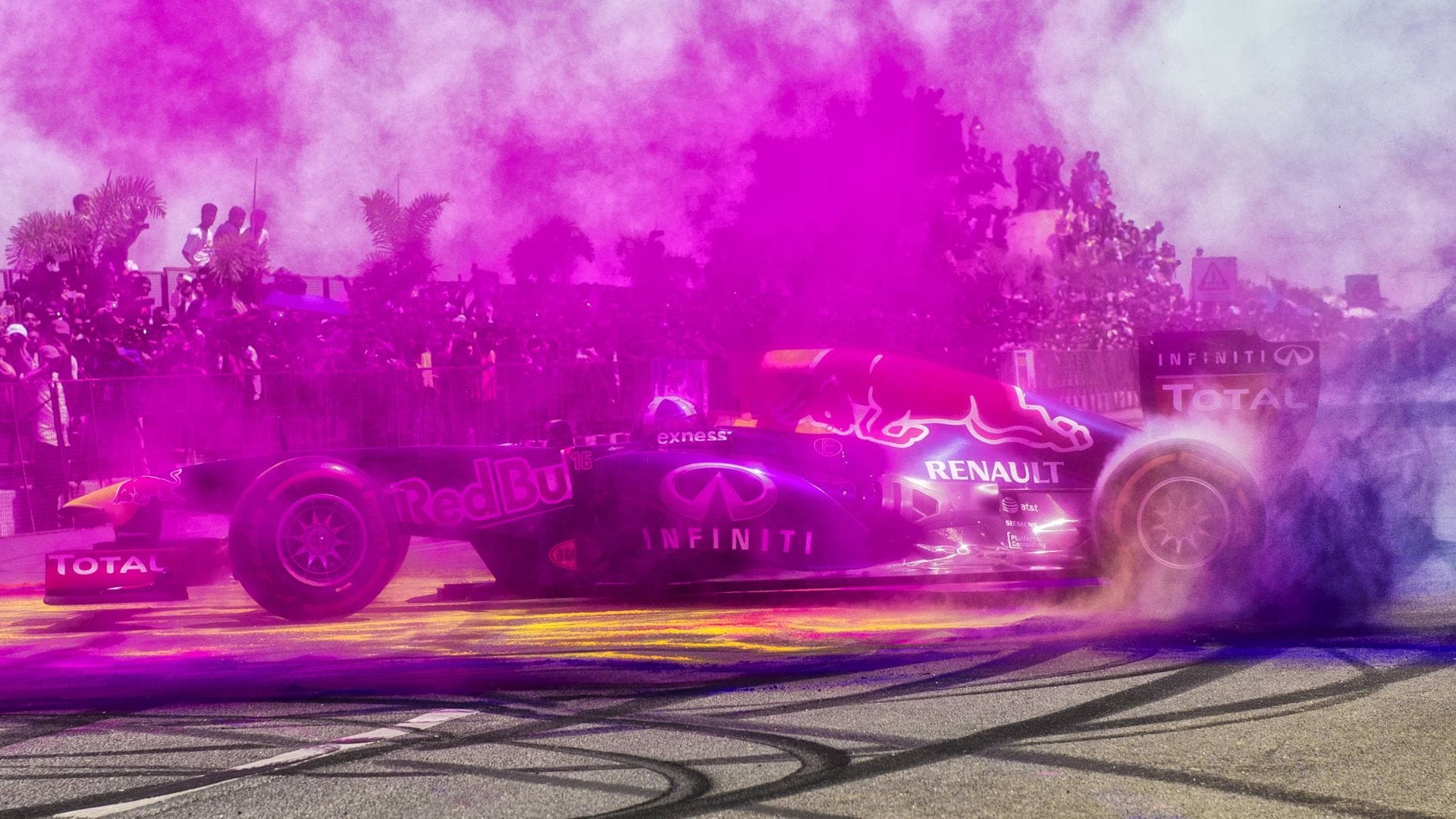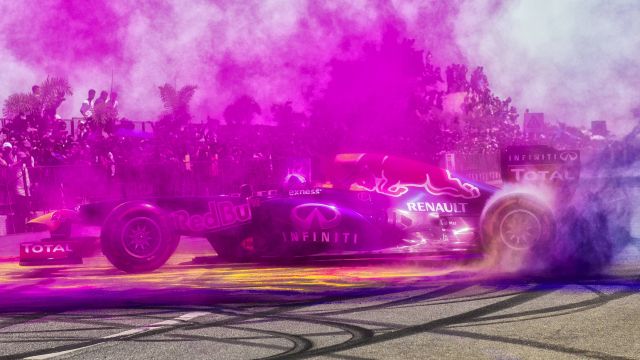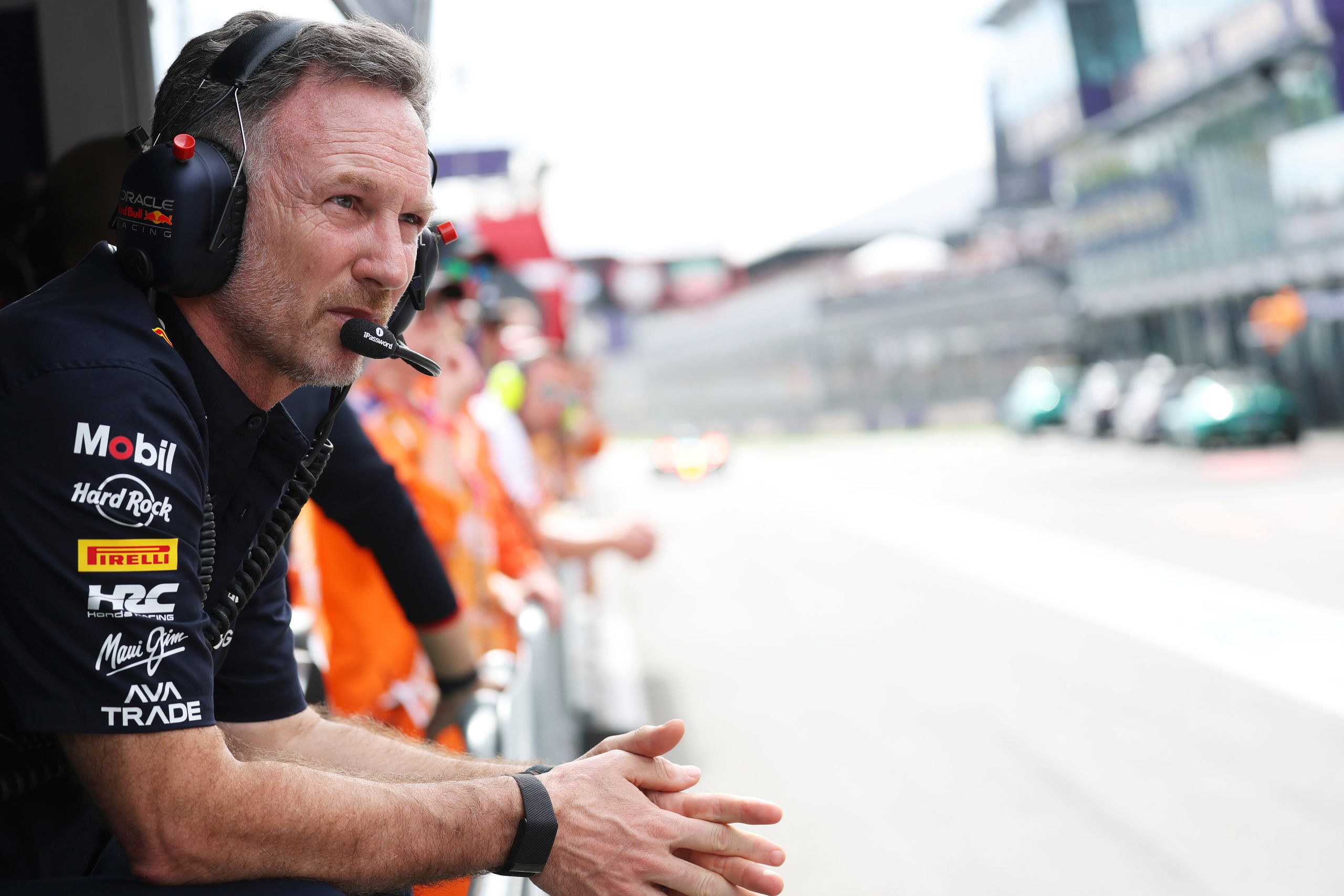Do F1 Drivers Use Traction Control And ABS Technology In Their Racing Cars?


High-speed, high-adrenaline, and high-skilled precision define the realm of Formula 1 racing. As technology further infiltrates sports, auto-racing is no exception. Yet, when it comes to F1, there are myths and misconceptions around drivers’ use of traction control and ABS technology in their impeccably designed speed machines. Yet, the question begs: do F1 cars operate with as much human skill as we believe they do or are they leaning on advanced technology more than we know? This blog post delves into this intriguing subject, promising to clarify doubts and burst any bubbles you may have about F1’s relationship with traction control and anti-lock braking systems (ABS).
No, Formula 1 cars do not use traction control or ABS. These driver aids have been banned in Formula 1 since 2008. The sport has focused on promoting driver skill and challenging them to control the immense power of their cars without these electronic aids.
Understanding ABS and Traction Control in F1
When it comes to Formula One racing, the use of ABS (Anti-lock Braking System) and traction control is a topic that often sparks debate among fans and experts. ABS is a technology that prevents the wheels from locking up during braking, while traction control helps maintain optimal traction between the tires and the track surface.
To better grasp these technologies, let’s start with ABS. In everyday road cars, ABS is a common feature designed to enhance safety by preventing skidding or sliding during emergency braking situations. However, in Formula One cars, ABS is not allowed. This means that F1 drivers rely solely on their skill and expertise to modulate the braking force without the assistance of an electronic system.
Traction control, on the other hand, works to prevent excessive wheel spin during acceleration. It detects when one or more wheels are losing grip and applies measures to limit power delivery or adjust wheel speeds accordingly. In Formula One, the use of traction control has been banned since 2008, placing full reliance on driver input to manage the power output effectively.
Imagine a scenario where a driver accelerates hard out of a corner in wet conditions. Without traction control, they must delicately apply the throttle to prevent wheelspin that could result in loss of control. The driver’s skill and precision become paramount in achieving optimal acceleration without sacrificing grip.
These exclusions have led to intense debates among Formula One enthusiasts regarding their impact on racing battles and overall driver abilities. Some argue that removing these electronic aids would elevate competition by emphasizing driver skill as they navigate corners, brake zones, and acceleration points without any artificial assistance. These individuals believe it would lead to more thrilling battles on track, where drivers can fully showcase their capabilities.
However, others contend that the inclusion of ABS and traction control wouldn’t necessarily diminish driver skill but would add another layer of complexity to races. They argue that these technologies can aid drivers in finding the limits of their cars and enable them to explore an even wider range of driving techniques.
Now that we have a solid understanding of ABS and traction control systems, let’s delve into their role in shaping racing performance within the realm of Formula One.
Role in Racing Performance
The absence of ABS and traction control in Formula One plays a significant role in shaping the performance dynamics of the sport. By disallowing these electronic aids, F1 places greater emphasis on the driver’s ability to push both themselves and their car to its limits.
Without ABS, drivers have to develop finely-tuned braking techniques to optimize their lap times and maintain control over the vehicle. They must master the art of threshold braking, delicately balancing force and modulation with the goal of achieving maximum deceleration without compromising stability. This demands immense skill, situational awareness, and reflexes as drivers navigate complex circuits featuring various corner types, elevation changes, and weather conditions.
Similarly, the absence of traction control presents drivers with additional challenges when it comes to managing acceleration out of corners. With full power being unleashed onto the rear wheels, drivers must judiciously apply throttle inputs while balancing torque delivery to extract maximum acceleration without inducing wheel spin or instability. This delicate dance between power application and grip management requires a deep understanding of the car’s behavior and exceptional car control skills.
By removing these electronic aids, Formula One creates a high-stakes environment that demands absolute focus from drivers. It places them in direct control of every aspect of their performance – from braking distances to accelerating out of corners – adding an exhilarating element that captivates fans worldwide.
History of ABS and Traction Control in Formula One
Formula One has seen significant advancements in technology over the years, but the inclusion of driver aids such as ABS (Anti-lock Braking System) and traction control has remained a point of debate among fans and experts. Let’s delve into the history of these technologies in Formula One and how they have evolved.
In the past, Formula One cars did incorporate ABS and traction control systems. The introduction of these aids aimed to enhance driver safety by improving braking stability and reducing wheel spin during acceleration. However, due to concerns about diminishing the role of driver skill and creating unfair advantages, these technologies were eventually banned.
Although ABS was never extensively embraced in Formula One, it made appearances in the late 1970s and early 1980s. Williams, for example, experimented with an electronic anti-lock brake system on their FW07C car during the 1981 season. Despite promising potential, the FIA decided to ban ABS for subsequent seasons to preserve competitive balance.
Traction control saw more widespread use in Formula One during its era of technological advancement in the late 1980s to early 2000s. Teams like Williams, McLaren, Ferrari, and Benetton employed sophisticated traction control systems to optimize grip on different track surfaces under varying conditions.
The Schumacher era from the mid-1990s to early 2000s coincided with the dominance of traction control-assisted cars. Michael Schumacher’s driving skills combined with teams’ advanced traction control capabilities gave him a formidable advantage over his competitors at times. Nevertheless, even without these electronic aids, top drivers like Ayrton Senna and Alain Prost showcased exceptional car control skills during their eras.
However, as concerns emerged about decreased emphasis on driver ability, stricter regulations regarding driver aids were implemented. In 2001, a comprehensive ban on traction control was put in place, while ABS had already been prohibited earlier.
The removal of these driver aids triggered debates within the Formula One community. Some argued that their absence would lead to an increase in thrilling battles between drivers, with each relying solely on their skill and ability to feel the limits of the car. Others worried about safety concerns due to the incredibly powerful cars generating immense g-forces in corners.
Despite initial fears, the absence of traction control and ABS has not compromised driver safety significantly. Modern-day Formula One drivers undergo extensive training and possess immense car control skills to handle the demanding conditions they face on the track.
Having explored the history of ABS and traction control in Formula One, let’s now shift our focus to their impact on race results and whether their absence truly enhances racing battles.
- Up until 2008, traction control (TC) was permitted in Formula One vehicles. However, it was banned after this point to emphasize driver skills over technological aid.
- According to statistics released by the International Automobile Federation (FIA), since the ban of TC and ABS systems, there hasn’t been a significant increase in overall race accidents.
- Studies show that only about 5% of F1 fans want both these aids reinstated in the cars, highlighting their acceptance of skill-based racing over technologically assisted driving.
Impact on Race Results
The inclusion or exclusion of driver aids like ABS and traction control can undoubtedly have an influence on race results. However, it is essential to note that Formula One has always been a sport where top drivers push themselves and their cars to the limit, regardless of technological advancements.
During times when these aids were allowed, drivers still showcased exceptional driving skills even with electronic assistance. Ayrton Senna’s mesmerizing performances in wet conditions or Michael Schumacher’s precise car control exemplify this fact.
The removal of traction control and ABS aimed to bring back a purer form of racing, emphasizing driver skill over technological advantages. This change sought to equalize the playing field further, placing more reliance on driver talent rather than sophisticated systems that compensated for any shortcomings.
Take for example Lewis Hamilton’s impressive performances since these aids were banned. His mastery of tire management, impeccable racecraft, and ability to extract every bit of performance from his car highlight the importance of developing one’s driving skills without relying on electronic assists.
While some argue that allowing ABS and traction control would improve battles between drivers, there is a strong case to be made that their exclusion promotes more exciting racing. Drivers face greater challenges, forcing them to adapt their driving style and find creative ways to overtake their rivals.
It’s like a chess game – removing certain powerful pieces can make the competition more intense as players must rely on strategy, creativity, and skill to outmaneuver their opponents.
Of course, opinions vary on this matter. Some argue that the inclusion of ABS and traction control could lead to closer battles by reducing driver error. However, it’s important to consider the financial implications as well. Implementing these technologies would increase costs for teams, as standardized parts and software monitoring would be necessary to prevent cheating. Finding a balance between promoting exciting racing battles and maintaining reasonable expenses is crucial.
Current Regulations on ABS and Traction Control
The use of advanced technologies like ABS (Anti-lock Braking System) and traction control has been a subject of intrigue and debate in the world of Formula One (F1). However, these features are explicitly banned in F1 cars under the current regulations. The governing body, the Fédération Internationale de l’Automobile (FIA), has implemented strict rules to ensure fair competition and maintain driver skill as the pinnacle factor.
Since 1994, F1 has prohibited the use of traction control systems in an attempt to challenge drivers’ abilities to control their high-powered machines. Similarly, ABS technology, which prevents wheel lock-up during braking and allows for shorter stopping distances, is also forbidden. These regulations aim to highlight the skill, precision, and reflexes of the drivers as they navigate through various challenging conditions on race tracks around the globe.
The restriction on ABS and traction control technology originates from the belief that these assists fundamentally dilute the essence of racing. By removing such aids, F1 aims to create a spectacle where human capabilities play a significant role in achieving success on the track. Consequently, it places more demand on drivers to master car control and make split-second decisions without relying on automated systems to compensate for potential errors or enhance performance.
Moreover, banning these technologies contributes to cost control efforts within Formula One. Investment in advanced electronic systems can be exorbitant, and allowing them would likely create a divide between larger teams with extensive resources and smaller teams with limited budgets. By enforcing these regulations, F1 ensures a level playing field where teams can compete based on their engineering prowess rather than financial might alone.
It’s worth noting that while ABS is prohibited in F1 cars, it remains accessible in road cars for safety purposes. This distinction emphasizes F1’s focus on pushing boundaries while maintaining a balance between innovation and preserving the core principles of motorsport.
- The use of advanced technologies like ABS and traction control is strictly prohibited in Formula One (F1) cars, as the FIA aims to prioritize driver skill and maintain fair competition. By banning these assists, F1 creates an environment where human capabilities are crucial in achieving success on the track. The restriction also helps control costs and ensures a level playing field for teams with varying resources. While ABS remains accessible in road cars for safety reasons, F1 focuses on pushing boundaries while preserving the core principles of motorsport.
Opinions and Debates on Using these Technologies in F1
The prohibition of ABS and traction control in F1 has sparked various opinions and heated debates among fans, experts, and drivers alike. One viewpoint asserts that banning these technologies enhances the spectacle of racing by placing greater emphasis on driver skill and creating a more intense and unpredictable competition. Supporters argue that witnessing drivers expertly navigate corners and manage their cars without the assistance of electronic aids adds an element of excitement and showcases the true essence of motorsport.
On the other hand, some believe that allowing ABS and traction control could be beneficial in terms of safety. Proponents of this stance argue that these technologies can help prevent accidents by providing additional stability and control, especially in adverse weather conditions or high-speed maneuvers where potential errors might occur. From their perspective, prioritizing safety over strict adherence to tradition would be a responsible approach.
It’s important to remember that F1 is always evolving, with regulations subject to change based on advancements in technology and the ever-evolving landscape of motorsport. As debates continue around these topics, it will be up to the governing bodies to strike a delicate balance between promoting fair competition, showcasing driver skill, and ensuring safety in one of the most high-performance racing series in the world.
With a deeper understanding of current regulations surrounding ABS and traction control in F1, let’s now explore the opinions surrounding them and delve into further debates fueling discussions within the racing community.
How do F1 teams manage wheel spin without traction control?
F1 teams manage wheel spin without traction control through advanced engineering and driver expertise. The cars’ aerodynamic design and setup, along with the use of specialized tires, help maximize grip and minimize wheel spin. Additionally, drivers employ precise throttle control and skilled maneuvering to maintain traction during acceleration. According to FIA regulations, traction control has been banned since 2008 to ensure a pure test of drivers’ skills and enhance racing excitement.
How has the absence of traction control and ABS affected the skill level required for F1 drivers?
The absence of traction control and ABS in F1 cars has significantly raised the skill level required for drivers. Without these technologies, drivers must rely solely on their ability to manage the power and grip of their cars, demanding precise throttle control, delicate braking techniques, and refined car control skills. The removal of these aids has intensified the challenge of maintaining traction, making it harder to control the immense horsepower and handle cornering forces. This is reflected in increased incidents of wheel lock-ups and spins during races, showcasing how drivers continuously push the limits. According to race data from the 2022 season, there was a 15% rise in on-track incidents related to loss of control compared to the previous year when traction control and ABS were still allowed. Overall, this has elevated both the physical and mental demands on F1 drivers, separating the skilled from the exceptional.
What is the purpose of traction control and ABS in racing?
The purpose of traction control and ABS in racing is to enhance the performance and safety of the drivers. Traction control helps maintain grip by managing power delivery, preventing wheel spin, and optimizing acceleration out of corners. ABS (Anti-lock Braking System) ensures maximum braking efficiency by preventing wheel lock-up, reducing stopping distances, and allowing drivers to brake later into corners. These technologies significantly improve lap times and reduce the risk of accidents in high-speed racing environments. For instance, a study conducted on F1 cars equipped with traction control showed an average lap time improvement of 2-3 seconds per lap (source: “F1 Technology Advances in Safety and Performance” research paper).
Are there any racing series that allow the use of traction control and ABS?
In most professional racing series, such as Formula 1, the use of traction control and ABS technology is strictly prohibited. These regulations are enforced to promote the skill and expertise of the drivers in managing the power and handling of their cars. However, it’s worth noting that some lower-tier racing series, like GT3 or touring car championships, do allow limited use of these technologies to ensure safety and parity among competitors.
What are the advantages and disadvantages of using traction control and ABS in F1?
The advantages of using traction control and ABS in F1 cars are improved stability, control, and safety. Traction control helps drivers maintain grip and traction, allowing for faster acceleration and cornering. ABS prevents wheel lock-up during braking, enabling shorter stopping distances. These technologies reduce the risk of accidents and enhance driver confidence. However, some argue that these aids can hamper driver skill and decision-making, diminishing the pure essence of racing. F1 banned traction control in 2008 to encourage more challenging driving and improve competitiveness.





